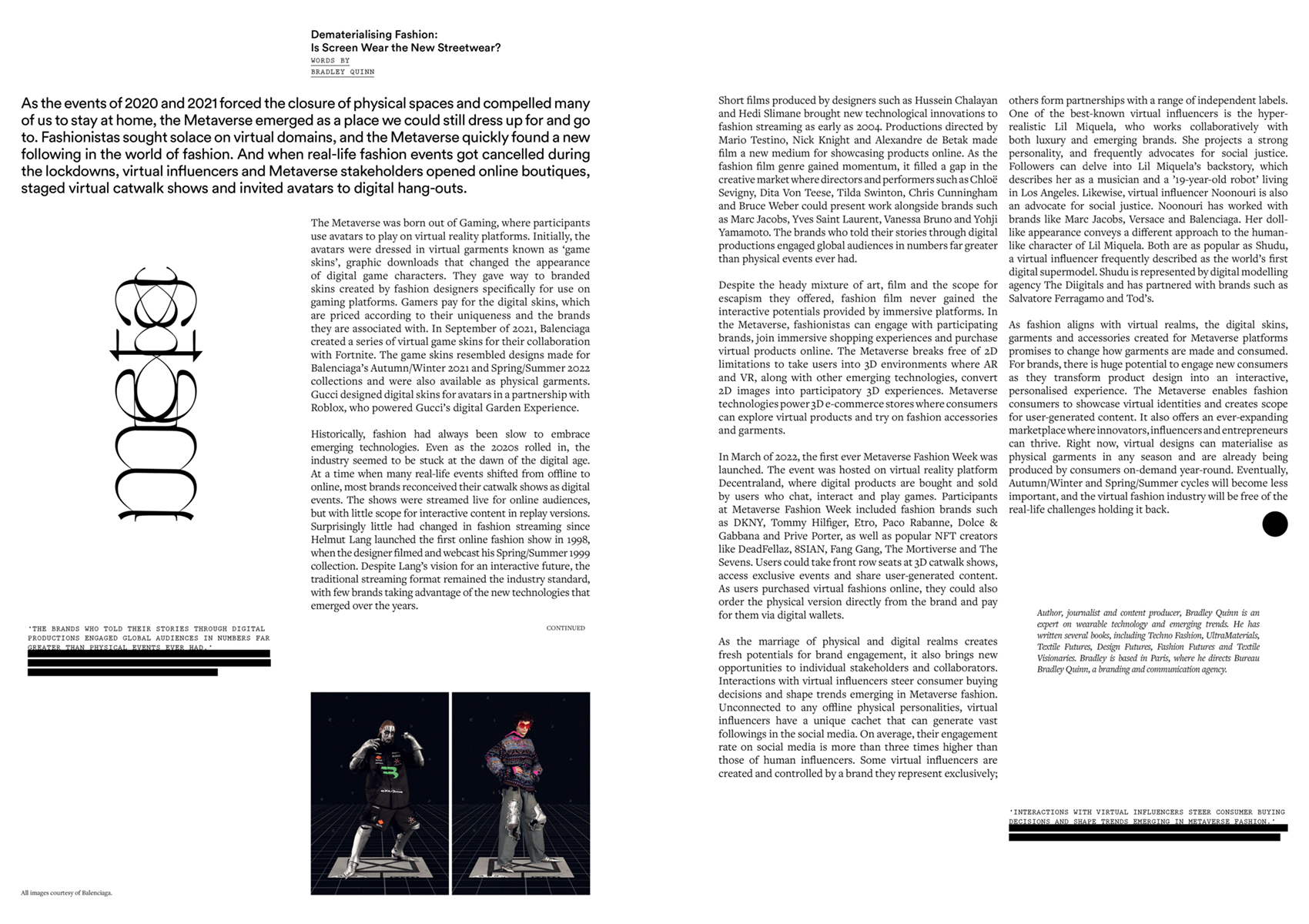-

Dematerialising Fashion: Is Screen Wear the New Streetwear?
As the events of 2020 and 2021 forced the closure of physical spaces and compelled many of us to stay at home, the Metaverse emerged as a place we could still dress up for and go to. Fashionistas sought solace on virtual domains, and the Metaverse quickly found a new following in the world of fashion. And when real-life fashion events got cancelled during the lockdowns, virtual influencers and Metaverse stakeholders opened online boutiques, staged virtual catwalk shows and invited avatars to digital hang-outs. Words by Bradley Quinn.
-
Fashion Story: Gloria
Photography by Jeppy Mortellaro and fashion by Debora Giugno.
-
Fashion Story: Plastic
Photography by Ria Mort and fashion by Dimitrios Constantine Makris.
-
Fashion Story: Soaked
Photography by Angelina Bergenwall and fashion by Adam Pettersson.
-
Fashion Space. Essay by Bradley Quinn
The spectacle of fashion masses in and around our clothing, constituting a unique space in itself. Fashion space can be found in urban cityscapes and built environments, but also on digital platforms and in virtual worlds. As the spaces of fashion extend beyond their physical confines, they take shape at precisely the point where traditional definitions of public space – as urban sites, democratic arenas and open-access areas – break down. By Bradley Quinn
-
A Box of Reflections
Inside Contributor’s Box of Reflections, you’ll find a collection of eighty prints in three different sizes and one poster. Also available is a limited edition of twenty copies of the box, each including one signed and numbered print from our two cover stories. Signed by the photographer Magnus Magnusson, the C-prints come in the size 30 x 20 cm. Contributor’s Box of Reflections is a true collector’s item. If you’re interested in the limited edition of twenty copies, please e-mail us as info@contributormagazine.com.
-
Signs Of Time. Essay on making Peace with Death in Fashion
Throughout history, fashion has been criticized for being superficial and out of touch with reality. As sociologist Yuniya Kawamura writes in her book Fashion-ology from 2005, fashion has been attacked by both scholars and feminists and didn’t become a legitimate research topic until recently (basically in the eighties, when fashion studies was established as an academic field). She quotes Sandra Niessen and Anne Brydon, who describe different historical attitudes towards fashion: “Social analyses uniformly condemned fashion. Feminists critiqued the sexual politics and gender oppression inhering in clothing which hobble and confine women. Marxists critiqued the fetishism of fashion and the ideology of conspicuous consumption. Psychologists treated fashion adherence as pathology.” By Maria Ben Saad
-
Heads and Headlessness. Essay by Stefanie Hessler
The head is a particularly popular body part amongst artists, art historians and spectators alike. Antique busts are often the only segments remaining of Greek and Egyptian sculptures, and promise a certain transcendence to past worlds. Just like death masks, they radiate an aura of proximity to their models, who continue to live through the mould. Let me take you on a brief and arbitrary journey around curiosities of the head and headlessness in art history and today. By Stefanie Hessler
